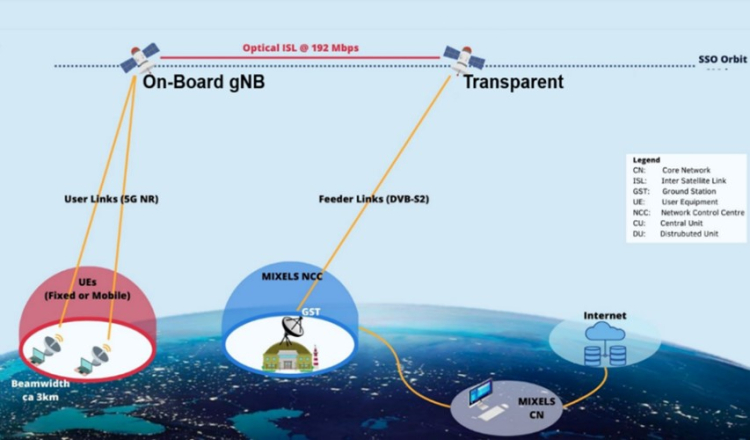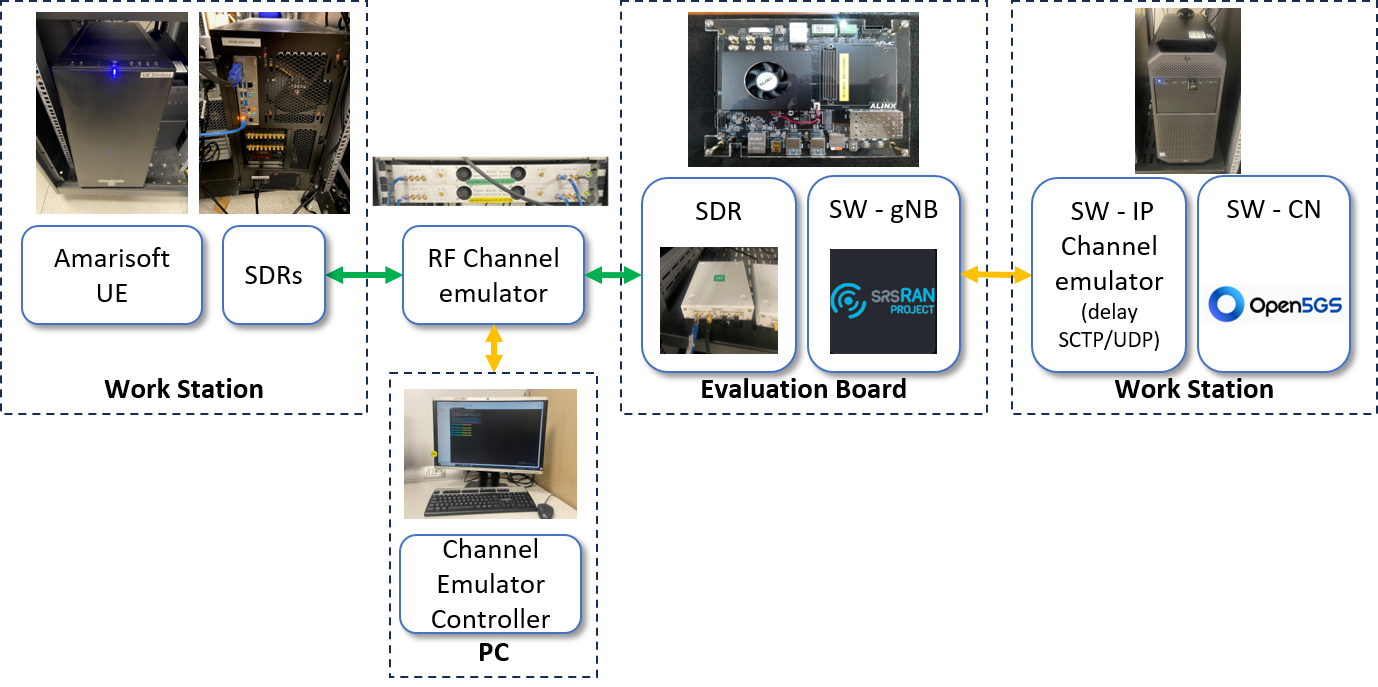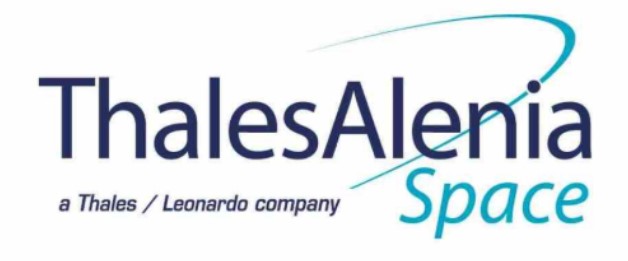
-
StatusOngoing
-
Status date2025-07-14
-
Activity Code2-.020
To develop and demonstrate in orbit an experimental 5G g-NodeB (gNB) distributed between a regenerative payload and a satellite gateway, demonstrating its main functionalities in the frame of New Radio (NR) Non-Terrestrial Networks (NTNs) from low Earth orbit satellites to be extended to medium Earth (MEO) orbit and Geostationary Earth orbit (GEO).
To embed the gNB functionalities in line with the 3rd Generation Partnership Project (3GPP) standard.
Accelerate the effective digitalisation of space to implement space network systems, integrating them with the terrestrial network through a single protocol.
- Actual digital on-board, hosting all the 5G NTN protocol stack.
- Easy configurability and flexibility in the gNB split (CU/DU/RU) distribution between satellites in the constellation.
- Effective gNB distribution between satellites to enhance Mobile Broad-Band (eMBB) services.
- Capability to give access to terrestrial User Equipment (UE) (terrestrial users) and also the ones in the space (space users).
The main innovation introduced by MIXELS Project lies in integrating part or all of the gNB architecture on-board a regenerative satellite. The demonstration activity is supported by the availability of two already in orbit satellites flying at 600 km of altitude in Sun-synchronous orbit, interconnected together via optical link (PathFinder GEN2 by Kepler Communications). Thanks to this capability several gNB configuration can be set-up and experimented as the one that embed the gNB on-board first satellite using the second one transparent to be a relay (see figure).

This configuration gives the opportunity to evaluate the impact of having a fully orbiting gNB in which:
- The user equipment (UE) is based on a commercial product emulating the 5G NR NTN devices in line with 3GPP standards.
- Space segment based on the two satellites as above described, hosting on-board regenerative programmable software-defined radio based on field programmable gate arrays.
- Utilisation of open source code (based on srsRAN free code) to embed gNB protocol stack functionalities.
- The mentioned gNB capabilities provide flexible framework that optimises network architectures giving the possibility to dynamically set-up the experimental test scenarios.
- At ground segment a NTN Gateway and a 5G Core Network (CN) based on Open5GS, manage network functionalities such as authentication, session management, and service orchestration.
The MIXELS project is shared on two phases:
- In the Phase 1 that has been kicked-off on 16 January 2024, the end-to-end (E2E) laboratory test-bed has been designed and implemented to host the implemented code of the E2E system protocol stack. Phase 1 will conclude during the end of June 2025.
- In the Phase 2 all the experimentation campaigns will be set-up end executed. Their data analysis and results will give the opportunity to tune better the implemented code at physical level (NR) and at upper level of the ISO/OSI stack in line with the 3GPP. The Phase 2 activity will core a frame time of 18 months.
At the end of June 2025, Phase 1 was successfully completed. The main result of Phase 1 was the implementation of the E2E testbed, which integrates all the functionality of a 3GPP 5G NTN gNodeB integrated into a digital satellite payload. The actual testbed is shown in the following image.

MIXELS Phase 1 successfully demonstrated the feasibility of deploying a 5G gNB distributed across multiple LEO satellites. End-to-end emulation in the laboratory provided the technical validation necessary to advance to Phase 2, in which the system will be implemented and demonstrated using real satellites in orbit. The results of Phase 1, including architecture selection, software tool design, and empirical testing, provide a solid foundation for future in-orbit activities and make a valuable contribution to the advancement of 5G NTN networks.





